In today’s world, many people have a creative ideas and they will like to bring their designs and their products to reach a wider people. One way that they re doing this is through a way that called print-on-demand. This method has become very popular because it allow business people to create and sell a custom products without the need for large upfront investments.
But what exactly is print-on-demand? In this my article, i will explain the basics of print-on-demand and how it can benefit entrepreneurs and artists who want to sell their unique creations online.
I will also explain to you the key concepts of print-on-demand, including how it works and the types of products you can create. I will also talk about the role of print-on-demand services, which are companies that help with the printing, packaging, and shipping of the products.
One of the great things on print-on-demand is that it offer flexibility and customization.
You can choose from a products like t-shirts, mugs or phone cases, and add your own designs or artwork to them.
Throughout this article, i will also answer common questions such as how to find a reliable print-on-demand provider and any legal considerations you should be aware of, like copyright and trademark issues.
By the end of this article, you will understand what print-on-demand is and how it can give you more experience for starting your own your e‑commerce. Let’s look into it and explore the world of print-on-demand together.
What is print-on-demand
Print-on-demand is a way of doing business where products like clothes, accessories, or home decor are made only when someone places an order for them. Instead of you to be making a bunch of products in advance and keeping them in stock, print-on-demand allow sellers to create and customize a products whenever a customer wants to buy them.
How does print-on-demand work?
How print-on-demand work is that. First thing you will start by selecting a product that you will want to sell, something like t-shirts, mugs or phone cases. These may be the items that you will like to print.
Next, you will create or find designs to put on these your products. You can make your own designs or use artwork that you have permission to use. The goal is to make the products look very attractive and very impressive to your customers. You can use design software or work with designers to get a design that will fit the products.
To sell your products, you will need to create an online store. This can be by creating your own e-commerce website or use platforms that are specifically designed for print-on-demand. You list your products on your store with descriptions text, pictures and prices. This is where customers will come and choose what they want to buy.
When a customer place an order and you receive the details of the order. This includes the design they choose and any other customization options, like size or color. You will then send this information to a print-on-demand service that will handle the printing and shipping.
The print-on-demand service will now take the order and prints the exact design that the customer select on your store. They use special printing techniques such as digital printing to transfer the design accurately onto the item. They also check the quality to make sure that everything looks good.
So once the product is printed, they will package it and shipped them to the customer. The print-on-demand service take care of the packaging of the product and the shipping of the product. Then they will now sent the package directly to the customers address.
The seller sets the product price, and their profit is the amount left after they subtract the costs of production, packaging, shipping and any fees. So the remaining amount is the sellers profit.
Conclusion, print-on-demand is a great way for you to create and sell a products without the need of keeping products or been worrying about the shipping. You can focus on designing and marketing your products, while the print-on-demand service takes care of the rest. It is a good business model that can allow you to make money on your online store.
What are the benefits of using print-on-demand services?
Print-on-demand (POD) services offer many benefits for a business person and an individuals who is looking to create and sell custom products. Here are the key advantage of print-on-demand services.
(Pros)
1. No Upfront Costs: Unlike traditional manufacturing, print-on-demand services don’t require you to pay for production or inventory upfront. You don’t have to invest in just creating products before selling them. With print-on-demand, products are only made when someone places an order. This means you can start selling without having to spend money on manufacturing or stocking items.
2. Reduced Risk: Print-on-demand helps minimize the risk of having unsold or excess inventory. Since products are made on-demand, you don’t even need to be worrying about overstocking or underestimating demand. This allow you to scale your business based on customer orders, so that is why it reduce the risk of financial loss due to over surplus stock.
3. Wide Range of Customization: Print-on-demand services allow you to offer a good customize products to your customers. They can choose from various designs, colors, sizes and other options to create a product. This feature helps you to attract more customers and also making your products looks more appealing.
4. Time and Cost Efficiency: By using print-on-demand services, you save time and money for yourself. Because you don’t have to handle inventory management, shipping or packaging of the products. The print-on-demand provider takes care of these tasks for you. This will allows you to focus on other important aspects of your business, such as marketing and customer service.
5. Global Reach and Accessibility: Print-on-demand services often have a wide reach and they can ship products internationally. This means that you can sell your products to customers around the world without even dealing with complex international shipping logistics. Additionally print-on-demand platforms are usually user-friendly and making it easy for individuals with limited technical knowledge to create and sell their products.
7. Flexibility and Scalability: Print-on-demand offers flexibility and scalability. If a particular design or product becomes popular, you can easily scale up production without the need for large-scale manufacturing or upfront investment. This flexibility allows you to test new ideas, respond to trends, and adjust your product offerings based on customer demand.
(Cons)
While print-on-demand (POD) services offer several advantages, and there are also some potential disadvantages and drawbacks that you should know:
1. Limited Control: When you use print-on-demand, you have less control over how your products are made. Another company handles the manufacturing and shipping, so you can’t ensure that everything is done exactly the way you want it. This can lead to issues with quality control and delays. If there is any issue or delay when producing the product, it can impact your ability to deliver the product on customer on time.
2. Higher Costs: Print-on-demand can be more expensive to compare when you made a products in large quantities. Since each item is made one-by-one, it costs more to produce each one. This can make it hard for you to make a good profit especially if you sell an items that is not expensive or have a lot of competition on the product.
3. Limited Customization: While print-on-demand allows for some customization, there may be restrictions on what you can do. You might not have as many options for different products, materials or printing techniques. This can limit your ability to create a unique and your specialized item.
4. Shipping Costs and Delivery Times: When using print-on-demand, you usually have to pay for shipping, and it might take longer for customers to receive their orders. This can lead to higher cost for your customers and potentially lower customer satisfaction if they expect faster delivery.
5. Dependence on the Print-on-Demand Service: When you rely on a print-on-demand service, you’re dependent on their systems and infrastructure. If the company have technical problems or go out of business it can disrupt your business and cause issues in fulfilling orders.
6. Profit Margins and Pricing Competition: Because print-on-demand can be more expensive, it can be harder to compete on pricing. Other businesses that make products in larger quantities might be able to offer lower prices. But you need to put higher prices on your product because of all the expensive you made when creating the product. And this can make you to be having challenging in getting customers and making a good profits.
How can I start a print-on-demand business?
Starting a print-on-demand business involve just a simple steps. First thing you need to do is to choose your niche. Select a specific market or audience that you want to target. This could be based on your personal interests or the potential demand for certain products. It is important for you to research for different markets and find a niche that will suits with your passions and can easily bring customers.
Once you have identified your niche, research various print-on-demand platforms. These platforms will be the foundation of your business as they will provide the infrastructure for printing and shipping the products. Look into platforms like Printful, Printify or Teespring. Compare their pricing, product range, quality, shipping options and how well they integrate with e-commerce platforms.
Next choose the products that you want to sell in your store. Print-on-demand platforms typically provide many items that someone can sell such as apparel, accessories, home decor and stationery. Consider the demand for these products within your chosen niche. Select the ones that will align with your target audience’s preferences and have the potential to sell well.
Now it is time for you to create a designs for your products. You can either develop your own designs if you have the skills or you find a reliable freelance designers on Fiverr or Upwork that can do it for you. The main thing is to create a unique design that will attract your target audience. Make sure your designs reflect the style and aesthetics of your niche. Alternatively, you can also license existing designs from artists or use royalty-free resources.
Once you have get your designs ready, set up your an online store using an e-commerce platform such as Shopify, WooCommerce or Etsy. Customize the appearance, layout, and branding of that your store to create a cohesive and visually appealing experience for your customers. This is an opportunity for you to showcase your brand identity and create a unique store that stands out.
After setting up your store, connect with a print-on-demand provider and integrate it with your online store. This integration will allows you to automate the order and fulfillment process. You will need to upload your designs, set pricing and configure your product options such as the colors, sizes and materials. Ensure that the integration is properly set up to ensure smooth order processing and fulfillment.
Now it is time for you to start creating compelling product listings. Write an engaging and informative descriptions for your products, add their features, benefit and unique selling points. Include high-quality product images that accurately represent your designs. These listings should effectively describe the value and appeal of your products to potential customers.
Once your store is ready, it’s time to launch and market your business. Start and promoting your business on various digital channels such as on social media, content marketing, email marketing and collaborations with influencers. Consider running a promotional campaigns, offering discounts or providing free shipping to attract customers to your store.
So when your business grows, it is crucial for you to be regularly monitor your sales, customer feedback, and website analytics. This analysis will provide an insights about your customer preferences, popular products, and sales trends. You will use this information to know the product that is selling well and the overall customer experience. Continuously be optimizing your store and marketing efforts to improve conversion rates and customer satisfaction.
What types of products can be created through print-on-demand?
Print-on-demand allow for a wide range of products to be created with customized designs. Some common types of products that can be created through print-on-demand include:
1. Apparel: T-shirts, hoodies, tank tops, sweatshirts, leggings, socks, and more.
2. Accessories: Hats, caps, bags, backpacks, phone cases, wallets, jewelry, and scarves.
3. Home Decor: Posters, canvas prints, framed prints, wall art, throw pillows, blankets, tapestries, and rugs.
4. Stationery: Notebooks, journals, greeting cards, calendars, stickers, and bookmarks.
5. Drinkware: Mugs, water bottles, tumblers, and coasters.
6. Tech Accessories: Laptop sleeves, phone cases, tablet covers, and mousepads.
7. Baby and Kids: Onesies, bibs, blankets, nursery decor, and children’s clothing.
8. Pet Products: Pet beds, pet bowls, pet clothing, and pet bandanas.
9. Kitchenware: Aprons, oven mitts, cutting boards, and kitchen towels.
These are just the few examples of the products that can be available on print-on-demand but depending on the print-on-demand platform you choose. It is important for you to research for different platforms and their product offerings to find the ones that will align with your business goals and target audience.
What printing methods are used in print-on-demand?
Print-on-demand uses various types of printing method to create customized products. The specific printing method used can be depend on the print-on-demand platform and the type of product being produced. Here are some common printing method that is used in print-on-demand.
Direct-to-Garment (DTG) Printing
DTG printers are a special printers that is use to print designs directly in the products like t-shirts, tote bags and hoodies. They work a bit like regular inkjet printers, but instead of printing on paper, they print directly on fabric. This means that you can get a cool, colorful designs on your clothes.
The way DTG printers work is by using special inks that are absorbed by the fabric. These inks are like water-based and they soak into the fabric fibers, making the prints look vibrant and long-lasting. The printer has a special printhead that move back and forth, and carefully putting the ink exactly where it needs to go based on the design you want.
One of the great things about this DTG printing is that it can handle a designs with a lots of colors and details. So even if you want a t-shirt with a beautiful picture or a design that has different shades and gradients, DTG printing can do it for you very well. It also really good for making just a few shirts or even just one because there is no need for a lot of setup like with other printing methods.
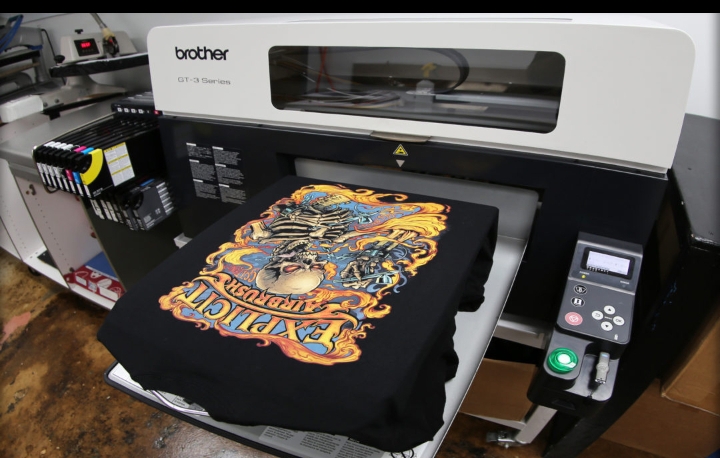
Sublimation Printing
A sublimation printer is an a special type of printer that is use for a printing method called sublimation printing. This method is used to be printing designs on a different materials like fabric, ceramics, or metal.
Sublimation printing work by using special inks that turn into a gas when they re heated. These inks start as a solid and are printed onto a special paper. Then the printed paper is placed on the material to be printed. Heat and pressure are applied, causing the ink to turn into a gas and penetrate to the material’s surface. This process creates colorful and it can make the prints to last long.
Sublimation printing has some great advantages. It produces a high-quality prints with vibrant colors that don’t fade easily. The prints become a part of the material, which makes them durable. It commonly used for custom designs on things like clothes, home decor items, phone case, and promotional products.
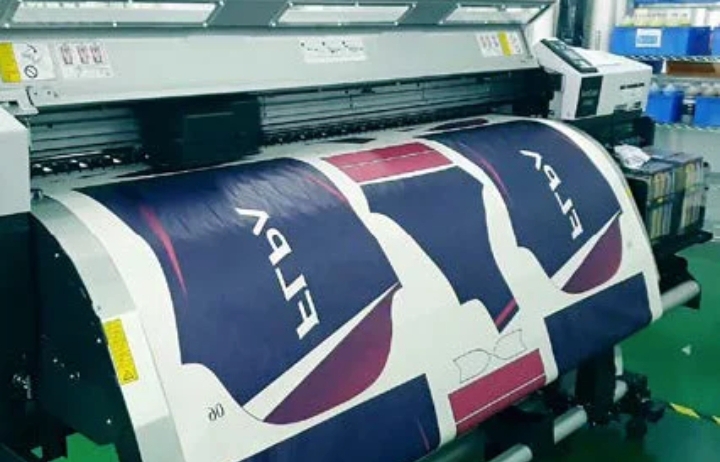
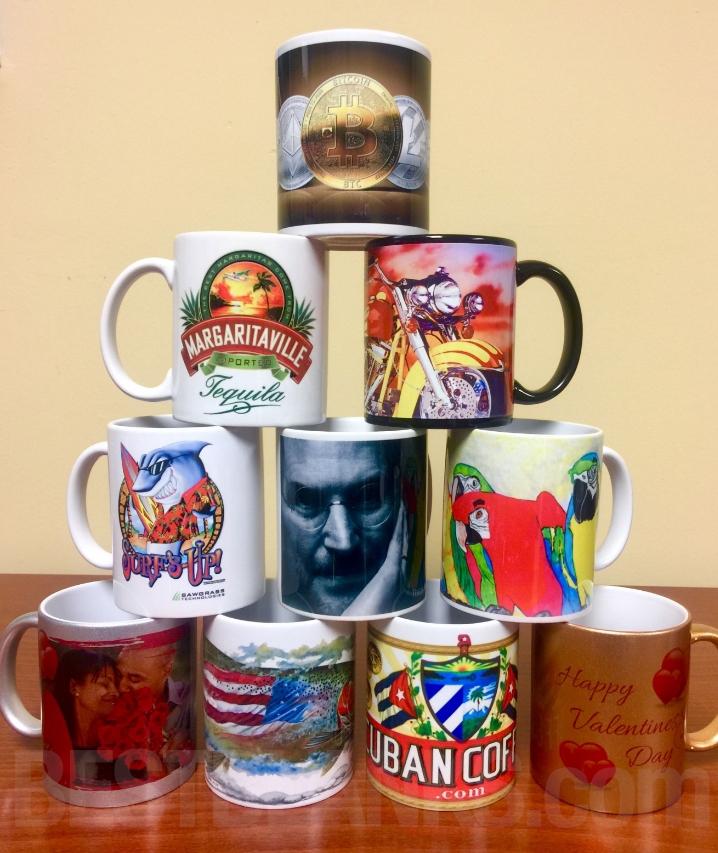
Heat Transfer Vinyl (HTV)
Heat transfer vinyl or HTV for short word, is a special type of material that is use to personalize and decorate clothing. Is inform of a thin, flexible vinyl that can be cut into a different shapes and designs. HTV is been designed to be applied to fabrics using heat and pressure, and creating a custom designs on clothes.
Heat transfer vinyl come in many different colors like matte or glossy and special effects like glitter or holographic. It will allow you to create good designs on various fabric items such as t-shirts, hoodies, bags, and more.
HTV is commonly used for customizing clothing, making team uniforms, creating promotional items, or for fun DIY projects. The vinyl designs are durable and can withstand regular washing and wear.
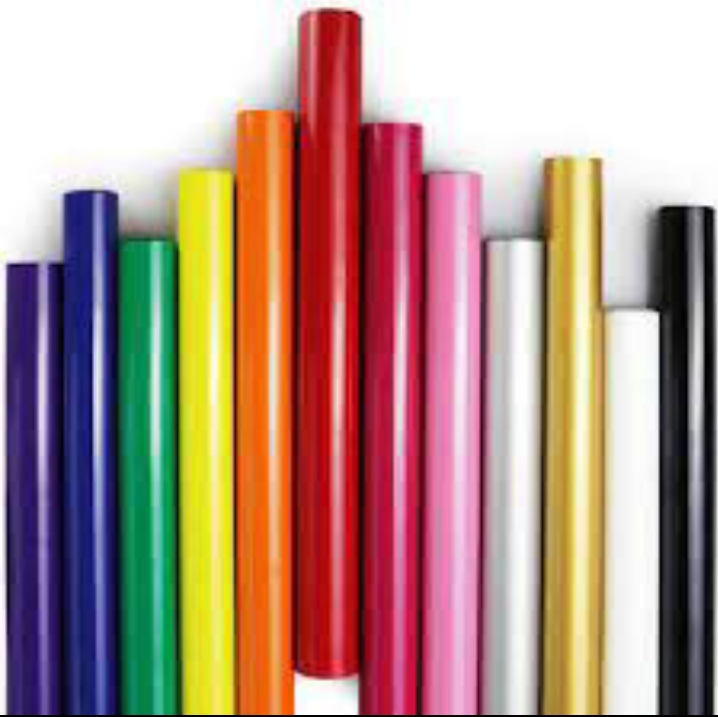
Digital Printing
Digital printing is a modern method of printing that uses digital technology to apply images or designs into a different materials like paper, fabric, or plastic. It’s a more better and cost-effective way of printing to compared with traditional methods.
In traditional printing, like offset printing or screen printing, printing plates or screens are needed to transfer the ink onto the material. But with digital printing, there are no plates or screens that is involved. Instead the digital file that contain the image or design is sent directly to the printer, which apply the ink onto the material.
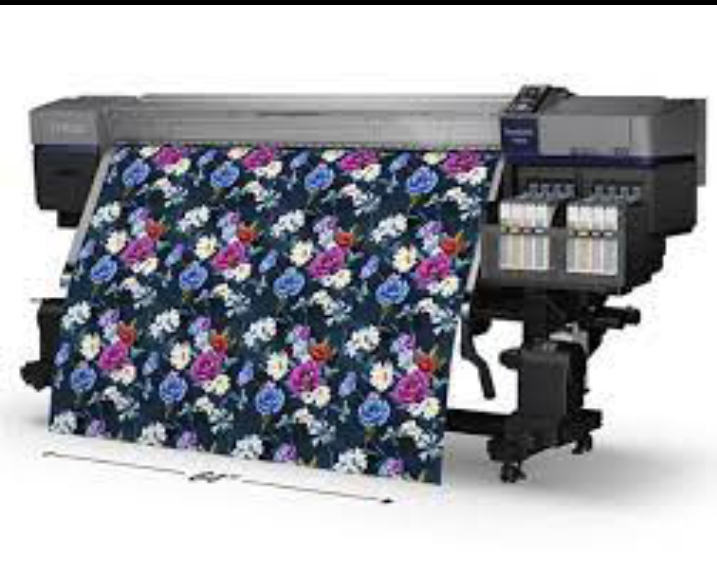
Are there any legal considerations with print-on-demand, such as copyright or trademark issues?
Yes when you want to start a print-on-demand business there are several legal considerations that you will need to keep in your mind to make sure that you compliance with copyright and trademark laws. Here are some key points to consider:
1. Copyright Infringement: You will need to make sure that you respect copyright laws and do not ever use copyrighted materials without having a proper authorization. Make sure that the designs, images, or artwork that you used on your print-on-demand product are original and you will be the one that will create it.
2. Trademark Usage: You will need to avoid using trademarks, logos, or brand names that is belong to others without their permission. When using a protected trademarks without authorization it can lead to trademark infringement claims.
3. Intellectual Property Rights: Be cautious of using copyrighted materials, such as photographs, illustrations, or text, without permission. Get proper licenses or permissions to use any copyrighted works.
4. Design Originality: Create or source original designs for your print-on-demand products to avoid copyright infringement claims. If you work with a designers, make sure that they provide original designs or have the necessary rights and permissions for any of third-party materials they used.
5. Licensing Agreements: If you plan to use any licensed images, artwork, or characters, carefully review the licensing agreements to understand the permitted usage and any restrictions on commercial use.
6. DMCA Compliance: Comply with the Digital Millennium Copyright Act (DMCA), which provides mechanisms for the copyright owners that they will use to protect their works online. Respond promptly to any valid DMCA takedown notices and remove infringing content as required.
7. Terms of Service: Have a clear terms of service on your website that will outline your copyright and trademark policies. Include provisions for reporting infringement and respond promptly to any infringement reports.
Read more
How to Make Money on YouTube: A Beginner’s Guide
A Beginner’s Guide to Dropshipping: Everything You Need to Know
What is Google AdSense: How to make money on AdSense
What is digital marketing?
How to drive traffic to your website
How to Start a Blog: A Beginner’s Guide with 9 Examples
What are the best hosting website
10 Great Ways To Generate Money Online (A Beginner’s Guide)
What is Structured Data Markup: how it works, the benefits, and types
What is web hosting? And how it works, benefits
What Is Google AdSense Arbitrage? Example, and Costs
What Is Affiliate Marketing? Everything You Need to Know in 2024







Leave a Review